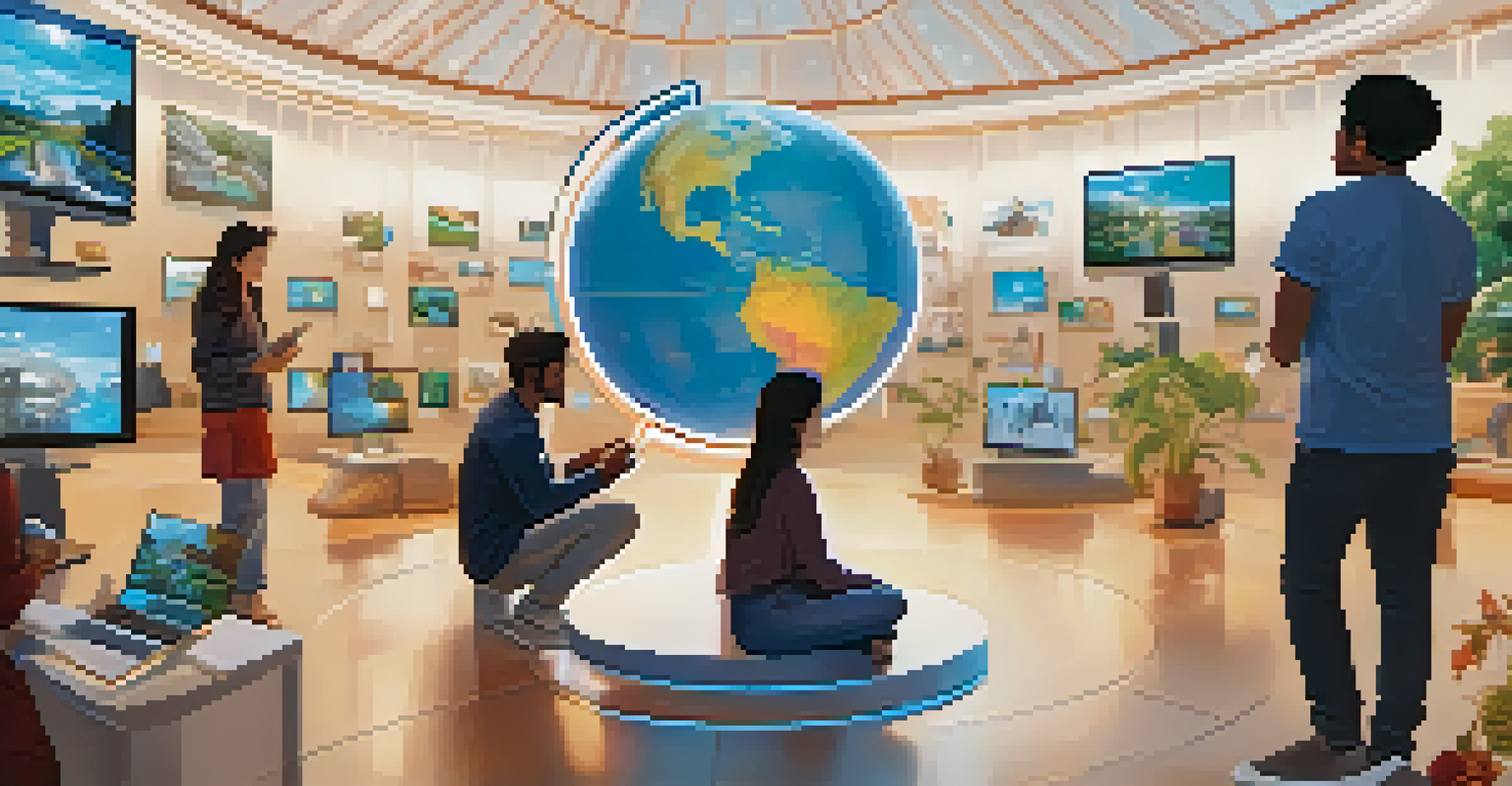Community Involvement in Promoting Intercultural Competence

Understanding Intercultural Competence and Its Importance
Intercultural competence refers to the ability to communicate and interact effectively with people from different cultural backgrounds. In today's globalized world, this skill is invaluable, as it promotes tolerance, collaboration, and understanding among diverse groups. By fostering intercultural competence, communities can bridge gaps, reduce conflicts, and enhance social cohesion.
In diversity, there is beauty and there is strength.
The importance of intercultural competence goes beyond personal interactions; it extends to workplaces, schools, and local communities. For instance, a workplace that values diversity and inclusion sees improved employee morale and productivity. Similarly, schools that teach students about different cultures prepare them to thrive in a multicultural society.
Ultimately, developing intercultural competence leads to richer experiences and more profound connections among individuals. Whether through casual conversations or professional collaborations, understanding diverse perspectives can spark innovative ideas and solutions.
The Role of Community Involvement in Building Competence
Community involvement acts as a catalyst for developing intercultural competence. When individuals engage in local events, volunteer opportunities, or cultural festivals, they naturally interact with people from various backgrounds. These experiences provide real-life learning opportunities, breaking down stereotypes and fostering empathy.

Moreover, community initiatives often encourage collaboration among diverse groups, creating a sense of shared purpose. For instance, a community garden that includes participants from different cultures not only beautifies the area but also facilitates cultural exchange and learning. Through these interactions, participants gain insights into one another's customs and traditions.
Intercultural Competence Matters
The ability to interact effectively across cultures fosters understanding, collaboration, and social cohesion in diverse communities.
As community members share their stories and perspectives, they help cultivate an environment of respect and understanding. This open dialogue can lead to deeper relationships, ultimately enriching the community as a whole.
Engaging Youth in Intercultural Activities
Involving youth in intercultural activities is essential for fostering future leaders who value diversity. Programs such as youth exchanges, cultural workshops, and community service projects create platforms for young people to understand and appreciate differences. These experiences can be transformative, shaping their worldviews and promoting inclusivity.
The world is but a canvas to our imagination.
For example, a school might organize a cultural fair where students showcase their heritage through food, music, and art. Such events not only educate peers but also fill students with pride about their backgrounds. By learning from one another, students develop a sense of global citizenship that extends beyond their immediate surroundings.
Encouraging youth to actively participate in these intercultural experiences equips them with the skills needed to navigate a diverse world. This foundation can lead to more harmonious interactions in their future personal and professional lives.
Community Organizations as Intercultural Catalysts
Community organizations play an essential role in promoting intercultural competence by serving as hubs for cultural exchange. These organizations often organize events, workshops, and discussions that bring people together to share their experiences and learn from one another. Through these initiatives, they create safe spaces for dialogue and collaboration.
For instance, a local cultural center might host language exchange programs, allowing participants to learn new languages while building friendships. Such programs not only enhance language skills but also foster an appreciation for different cultures. By participating in such activities, community members can develop a deeper understanding of one another's challenges and triumphs.
Community Involvement Boosts Skills
Engaging in local events and initiatives helps individuals gain real-life experience, breaking down stereotypes and building empathy.
These organizations help facilitate connections between diverse groups, turning cultural differences into strengths. They empower individuals to embrace diversity, ultimately leading to a more cohesive and inclusive community.
Cultural Festivals: Celebrating Diversity Together
Cultural festivals serve as vibrant platforms for celebrating diversity and promoting intercultural competence. These events bring together individuals from various backgrounds, allowing them to share their traditions, food, and art. By participating in such festivities, community members can experience the richness of different cultures firsthand.
For example, a local food festival featuring dishes from various cultures encourages attendees to step outside their culinary comfort zones. As they sample new flavors and learn about their origins, they gain a greater appreciation for the cultural significance behind each dish. This shared experience fosters connections and dialogue among attendees from different backgrounds.
Cultural festivals not only entertain but also educate, breaking down barriers and encouraging empathy. They remind us that diversity is something to be celebrated, not feared, and pave the way for a more inclusive community.
Creating Safe Spaces for Dialogue and Learning
Creating safe spaces for dialogue is crucial in promoting intercultural competence. These environments encourage open conversations about cultural differences and social issues without fear of judgment or backlash. By fostering trust and respect, communities can engage in meaningful discussions that lead to greater understanding and growth.
For instance, community centers can host discussion groups where participants share their experiences and perspectives on topics like race, identity, and immigration. Such conversations can be uncomfortable but are necessary for addressing underlying biases and prejudices. By engaging in these discussions, community members can challenge their assumptions and learn from one another.
Youth Activities Shape Future Leaders
Involving young people in intercultural experiences cultivates inclusivity and prepares them to navigate a diverse world.
Ultimately, safe spaces help cultivate a culture of inclusivity and respect. They empower individuals to voice their concerns while promoting active listening and empathy, essential components of intercultural competence.
The Impact of Technology on Intercultural Engagement
In today's digital age, technology plays a significant role in enhancing intercultural engagement. Social media platforms, online forums, and virtual events enable individuals from different cultures to connect, share ideas, and collaborate. This technological interconnectedness can bridge geographical gaps and foster intercultural understanding.
For example, virtual cultural exchange programs allow participants to engage with peers from around the world without leaving their homes. These platforms provide opportunities to learn about each other's cultures through discussions, workshops, and collaborative projects. Such interactions can spark curiosity and appreciation for diverse perspectives.

While technology can facilitate intercultural engagement, it's essential to approach these interactions with an open mind and cultural sensitivity. By using technology thoughtfully, communities can enhance their intercultural competence and build meaningful connections across borders.